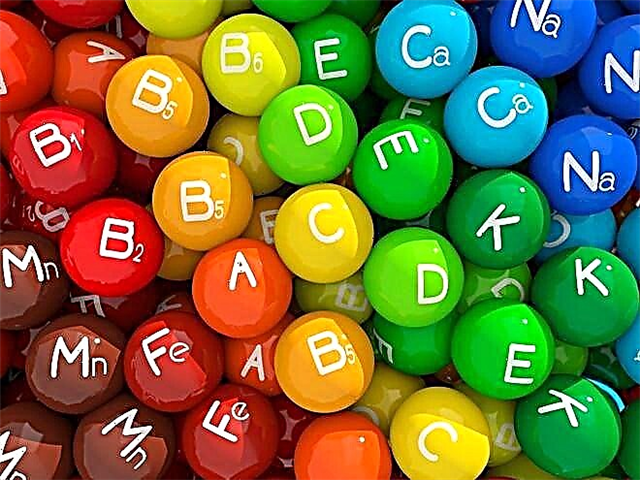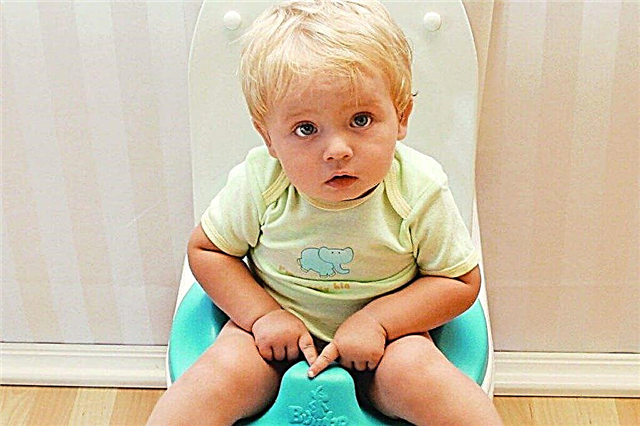
Nurofen is one of the most popular medications prescribed for fever and pain relief. For the smallest patients, Nurofen is made in the most convenient forms for babies. These are rectal suppositories used in infants over 3 months to two years of age, as well as a sweet suspension, which is prescribed for children from 3 months to 12 years.
However, the dosage in such forms of Nurofen is designed for children in the first years of life, therefore, as they grow older, one candle is not enough for a child, and a single dose of syrup becomes very large. In such situations, a tablet preparation helps out. From what age is it given to children, when such pills are in demand in pediatrics and in what dose are they advised to be used if a child is sick?

Release form and composition
Nurofen tablets can be found in two packaging options - in silver boxes and in orange boxes, which bear the inscription “from 6 years old”. Both are small, round, white tablets. Their sweet shell has a black Nurofen lettering on one side.
The composition of the tablets is the same - the main component is ibuprofen at a dose of 200 mg. Sodium citrate and sodium lauryl sulfate, as well as stearic acid, croscarmellose sodium and silicon dioxide are added to it to form the core of the drug. Sucrose, macrogol 6000, acacia gum, talc, titanium dioxide and sodium carmellose are used for the manufacture of the shell.


The tablets are placed in blisters of 6, 8, 10 or 12 pieces, and in one pack there can be from one to eight blisters, so there are silver packages on sale containing from 6 to 96 tablets. As for Nurofen in orange boxes, there is only 1 blister with 8 tablets inside such a pack.
Operating principle
The ibuprofen contained in the tablets blocks cyclooxygenase enzymes, which disrupts the formation of substances that cause an increase in body temperature, inflammation and pain impulses - prostaglandins. Due to this effect, the medication has an anti-inflammatory effect, relieves pain and fights fever.
The tablets taken orally begin to act in about 45-60 minutes, when their active ingredient enters the bloodstream and accumulates in the maximum amount.

After binding with protein molecules, it is transported to the site of inflammation and other organs, where it exerts its effect. The metabolism of the drug takes place in the liver, therefore, a dysfunction of this organ can affect the treatment with Nurofen. Elimination of the drug depends on the normal functioning of the kidneys, since most of the ibuprofen leaves the child's body in the urine.
Indications
This drug is prescribed:
- With a fever caused by ARVI, influenza or other infection.
- For pain caused by trauma, sprain, bruise, inflammatory disease.
- For headaches and migraines.
- With myalgia, neuralgia, as well as with toothache.


At what age is it prescribed?
As noted on the orange packaging of Nurofen tablets, this medicine is approved for children over 6 years old. The instruction also clarifies that this coated medication is used only if it weighs more than 20 kilograms. If a six-year-old child weighs less, it is better for him to give the suspension, calculating its dosage by body weight.
Tablets in silver boxes also have an age limit of up to 6 years.


Both versions of the drug are not used in babies in the first years of life, since they contain a dosage that will be effective only for patients over six years old, and for small children a smaller dose is required. In addition, a child 7 years old and older already knows how to swallow a pill and does not protest against such a dosage form.
Contraindications
Nurofen tablets are not prescribed not only to patients under the age of six, but also in such cases:
- If a high level of potassium is found in the blood test of the baby or a coagulogram showed unfavorable changes in blood coagulation.
- If there are erosive or ulcerative changes in the organs of the digestive system of a small patient.
- If bleeding begins from the wall of the stomach, cerebral vessels or other localization.
- If the patient cannot tolerate ibuprofen or another component of the tablets.
- If the baby has been diagnosed with a serious illness of such important organs as the kidneys, liver or heart.
- If the child has an allergic reaction to acetylsalicylic acid or other anti-inflammatory drugs of the nonsteroidal group.
- If a child does not tolerate fructose, his body lacks enzymes (sucrase, isomaltase), or he has glucose-galactose malabsorption.

In addition, for many pathologies, Nurofen treatment requires medical supervision. Such diseases include bronchial asthma, diabetes mellitus, anemia, systemic lupus erythematosus and other diseases.
Side effects
The drug can cause the following side effects:
- Rash, runny nose, skin inflammation, redness and other manifestations of allergies.
- The digestive tract of some children reacts to taking Nurofen with the appearance of nausea, discomfort or pain in the abdomen, and other symptoms of gastrointestinal irritation.
- In children with bronchial asthma, taking Nurofen often provokes an exacerbation of such a disease.
- Sometimes, pill treatment causes insomnia or headaches.
- In very rare cases, the drug worsens hematopoiesis, inhibits kidney function, causes edema and other negative reactions.

Instructions for use
Reception scheme:
- The drug is given to the child to swallow and drink with plain water. To reduce the risk of negative effects of Nurofen on the digestive system, taking the pill is recommended during or immediately after a meal.
- A single dosage for patients over 6 years old is one tablet, and children over 12 years old can be given 2 tablets at once, but the maximum dosage for patients 6-18 years old is 4 tablets per day.
- The medicine is usually prescribed three times with an interval of 8 hours between doses, but if necessary, Nurofen can be given 4 times a day, that is, every 6 hours. Breaks of less than six hours between two tablets are not recommended.
- As for the duration of admission, it is important to know that Nurofen tablets are prescribed only as a short-term treatment for symptoms such as pain and fever. Usually, this medication is used for only 1-3 days to relieve symptoms. If no improvement is observed after 2-3 days of taking, you should consult your doctor.


Overdose
If taken in too high a dose, Nurofen can affect the digestive tract (causing symptoms of dyspepsia, pain or even bleeding), the nervous system, kidneys, liver and other organs. In the most severe cases of overdose, a small patient is observed cyanosis, impaired breathing, convulsions and other dangerous symptoms. In treatment, symptomatic agents are used, as well as forced diuresis (a lot of drinking so that the ibuprofen leaves the child's body faster).

Interaction with other drugs
Annotation to the tablets notes a rather large list of drugs with which Nurofen should not be combined or treatment should be used with caution. These drugs include nimesulide, cyclosporine, caffeine, antacids, ketorol, some antibiotics, diuretics, and many other drugs. Some of them interfere with the action of ibuprofen, while others increase the side effects.

Therefore, if a child is taking any medication, this must be taken into account before giving the patient a Nurofen pill.
Terms of sale
Like Nurofen for children in suppositories and suspensions, the tablet preparation can be purchased without any difficulty at any pharmacy, since it is an over-the-counter medicine. The average price of 8 tablets for children is 100-110 rubles, and 10 tablets in a silver box are 80-90 rubles.
Storage features
It is imperative to keep Nurofen tablets at home out of the reach of babies. It is also important that the drug is not affected by increased temperature (it should not be higher than +25 degrees) or humidity. A medicine with an expired shelf life of 3 years from the date of release is unacceptable to use in the treatment of children.

Reviews
There are many positive reviews about the treatment with Nurofen tablets for children, which confirm the high effectiveness of this drug. According to the parents, the medication quickly helps with headaches, reduces fever, eliminates painful sensations in the joints, muscles, back and so on.
Adverse drug reactions are rare and often present as negative gastrointestinal symptoms or allergies. The size of the tablets is small, and their shell is sweet in taste, therefore, most patients do not experience problems with swallowing such Nurofen.
Parents call its cost one of the main disadvantages of the drug, which is why they often prefer cheaper analogues.


Other types of Nurofen tablets
Let's analyze them in more detail.
"Nurofen Forte"
In such coated tablets, ibuprofen is contained in a dosage of 400 mg each, so the drug is approved in pediatrics only from the age of 12. Like ordinary Nurofen, Forte is represented by round white tablets, but the inscription on one side of such a drug is red and next to the word Nurofen there is a number 400. One package contains from 6 to 24 tablets.
The indications for taking Nurofen Forte are the same as for the use of Nurofen tablets. The possible negative effect on the child's body, the list of contraindications, overdose symptoms and storage characteristics of such drugs also coincide.
The only difference is the dosage regimen, since Nurofen Forte can be given to children over 12 years of age, one tablet no more than twice a day.

"Nurofen Express Neo"
Such a drug in a film-coated tablet contains ibuprofen in the same dose as the tableted Nurofen - 200 mg in each tablet. One package of this type of Nurofen contains from 6 to 24 round tablets with the inscription N >> on one side. It is also available in capsules and gel, as well as in tablets with double the amount of the main ingredient (forte).
The main feature of Express Neo tablets, as their name implies, is faster action. It is due to the form of ibuprofen in which this substance is contained in the drug. This is sodium dihydrate, which is absorbed faster, so the analgesic and antipyretic effect develops within 30-35 minutes after taking the pill.
The medicine is allowed to be used in children from 12 years of age.

Drugs "Long" and "Multisymptom"
The main difference between these types of Nurofen is the presence of the second active ingredient in the tablets - paracetamol. In the Long preparation, it is added in a dose of 500 mg to 200 mg of ibuprofen.

There is less paracetamol in Multisymptom tablets (only 325 mg), and the ibuprofen dosage is doubled (up to 400 mg per 1 tablet).

Both drugs are contraindicated up to 12 years of age and are used mainly for pain, but can also be prescribed for a febrile condition.
"Nurofen Plus"
This type of Nurofen is also two-component - in its composition, in addition to ibuprofen in the amount of 200 mg, 1 tablet contains codeine, the dosage of which is 10 mg in each tablet. The drug is characterized by a capsule shape and an N + inscription on one side. In one pack of this medicine there are from 2 to 48 such tablets.
Due to the presence of codeine the analgesic effect of the drug Plus is stronger, therefore, such a remedy is in demand after injuries, with toothache, in the treatment of neuralgia, with migraines, with rheumatic pains and in some other cases. Since codeine belongs to opioid analgesics, Nurofen Plus is sold by prescription and is not given without a doctor's prescription. In childhood, the medication is contraindicated in patients under 12 years of age.

Analogs
The most popular analogue of Nurofen, often bought instead of such tablets, since its cost is slightly lower, is Ibuprofen. It is also available in coated tablets containing 200 or 400 mg of the main substance.
Depending on the dosage, this medication is prescribed for children over 6 years old and over 12 years old. In addition, "Ibuprofen" also has forms for younger children (suspension, suppositories), so it can replace Nurofen for children.
Other ibuprofen-based preparations produced in solid form, prescribed instead of Nurofen, are "Deblok", "Mig 400", "Nebolin caps", "Faspik", etc. They are presented as tablets or capsules and are capable, depending on the dosage, fully replace tableted Nurofen or Nurofen Forte.


In addition, if you have a fever or severe pain, your doctor may recommend other medications that can lower the temperature and relieve pain. These include "Efferalgan", "Next", "Voltaren", "Analgin", "Perfalgan", "Nise", "Panadol", "Ibuklin", "Diclofenac", "Nimesil" and many others.
However, it is not recommended to give them without examining the child and prescribing a pediatrician, because they are based on different active ingredients, and contraindications and age limits for such medicines also differ.
All about Nurofen, its active ingredients, route of administration, side effects and contraindications, see the next video.



